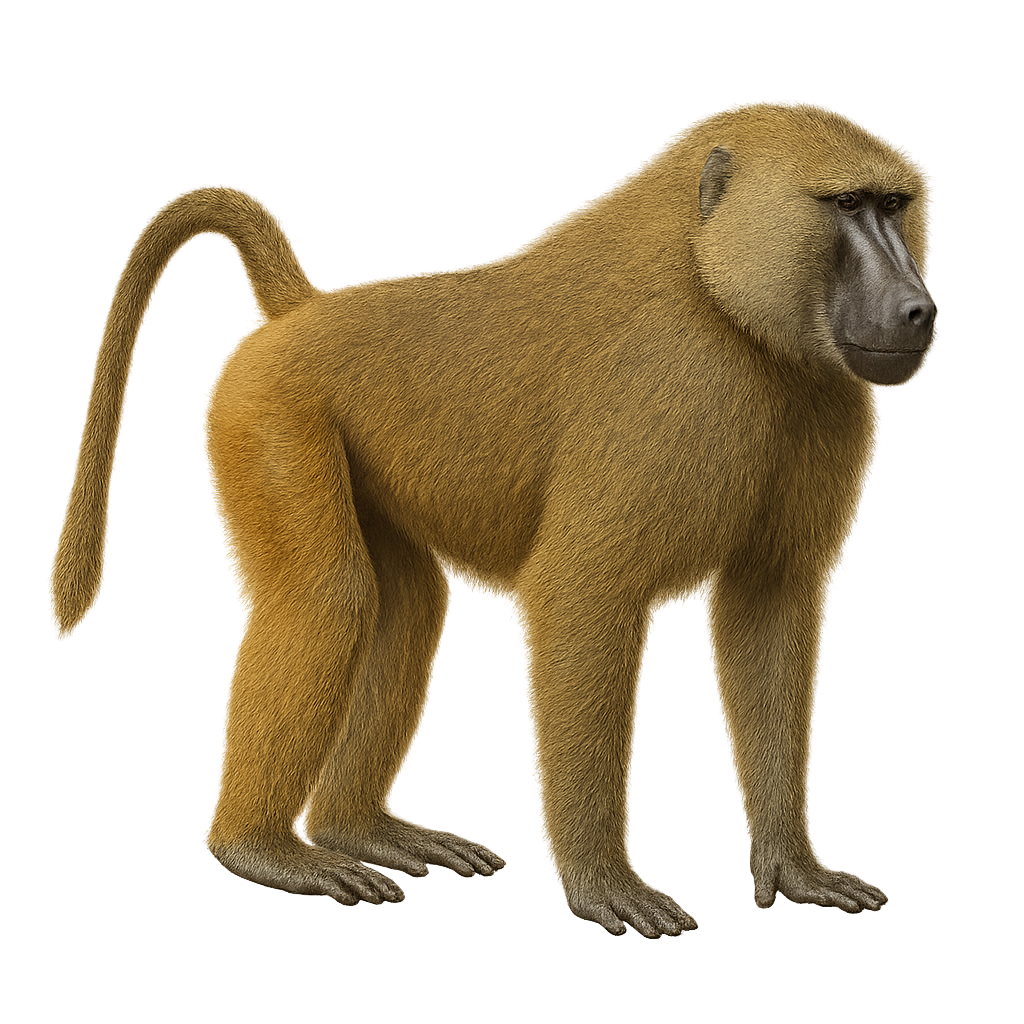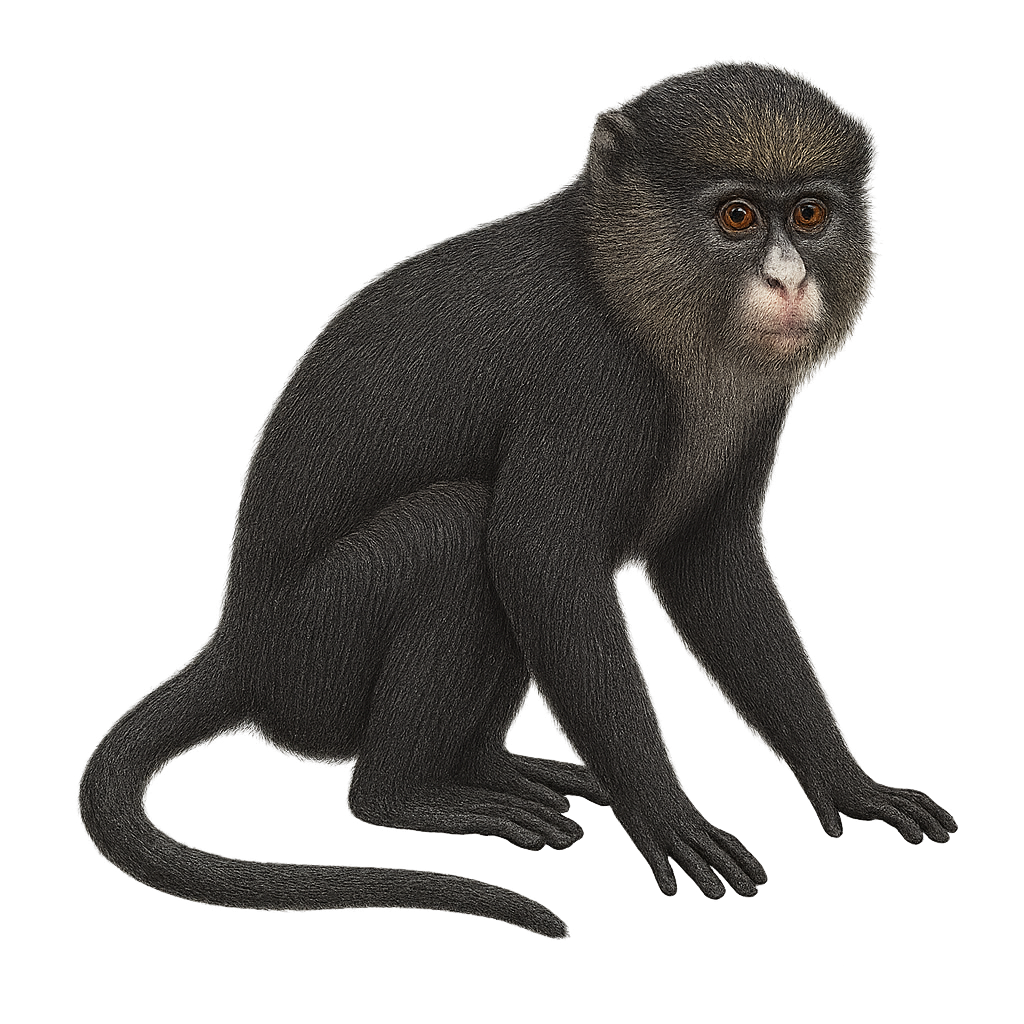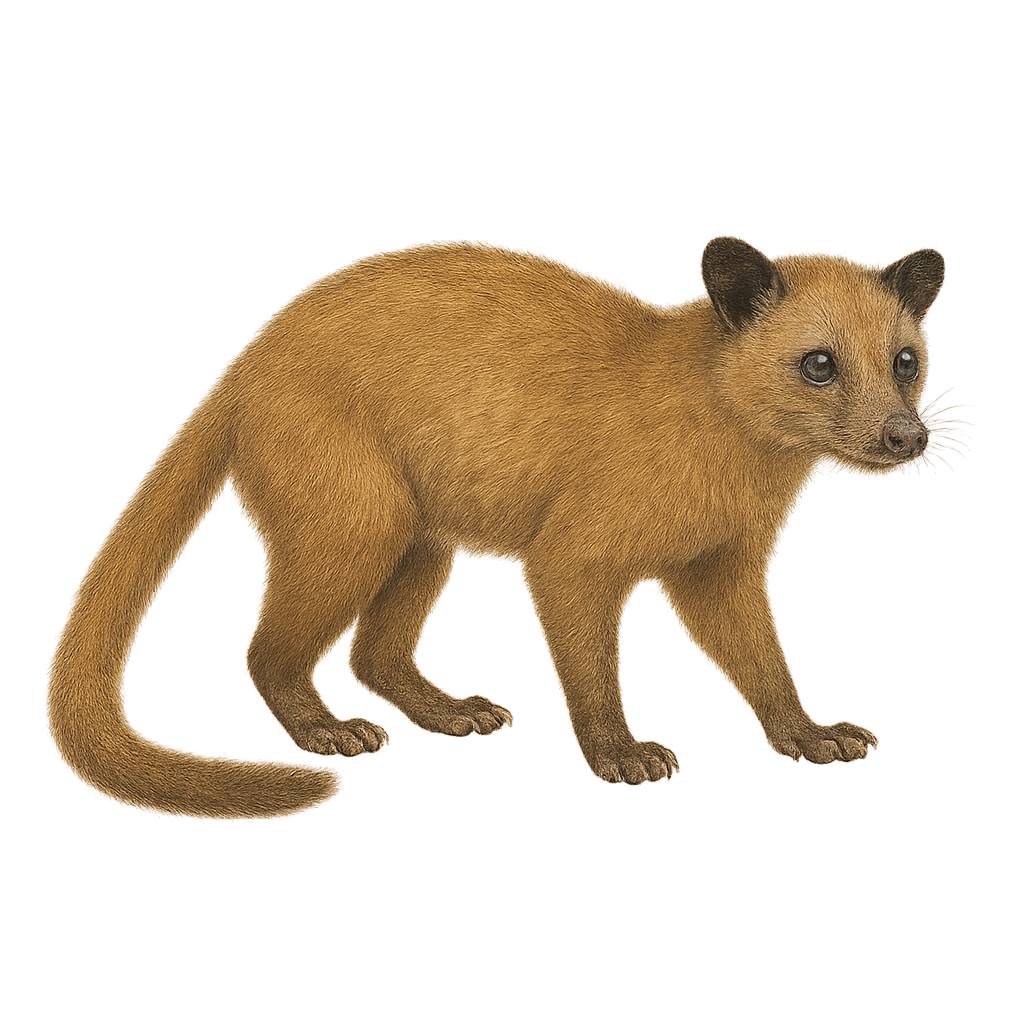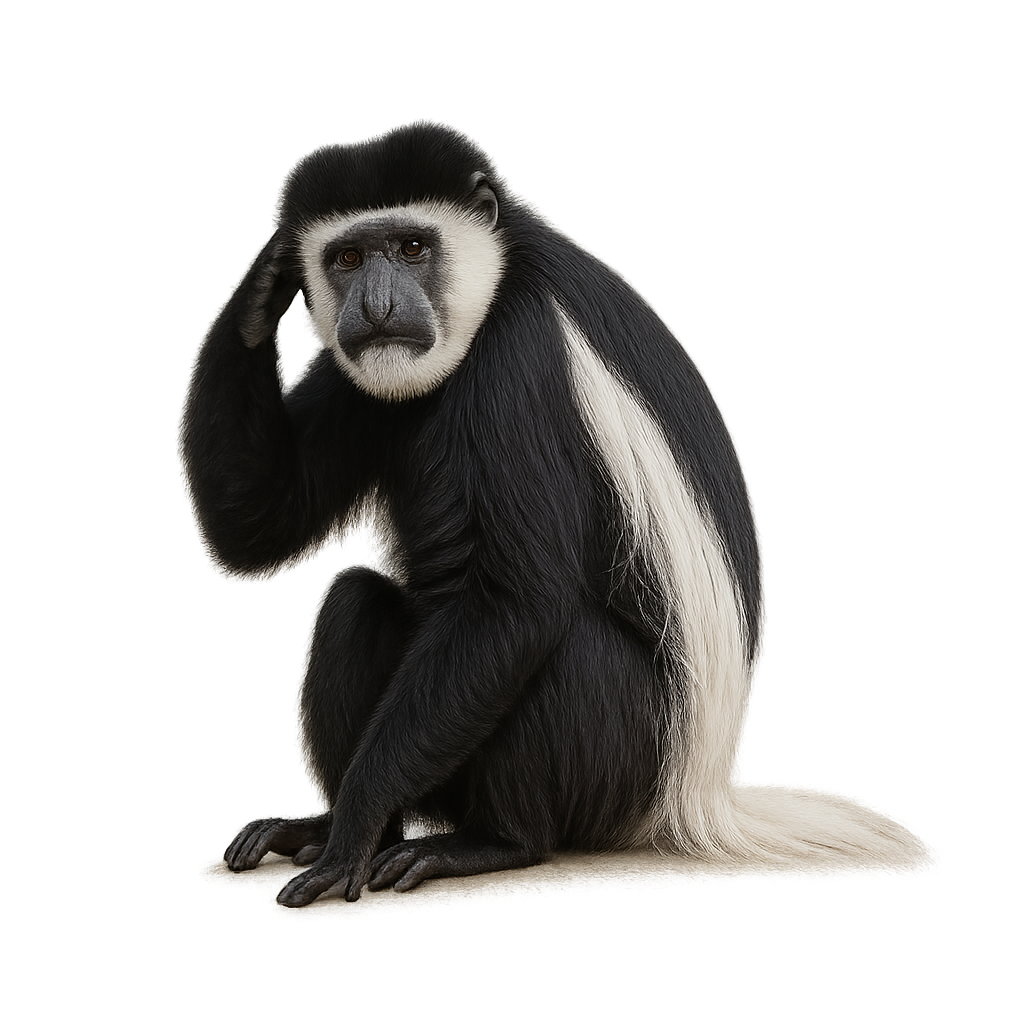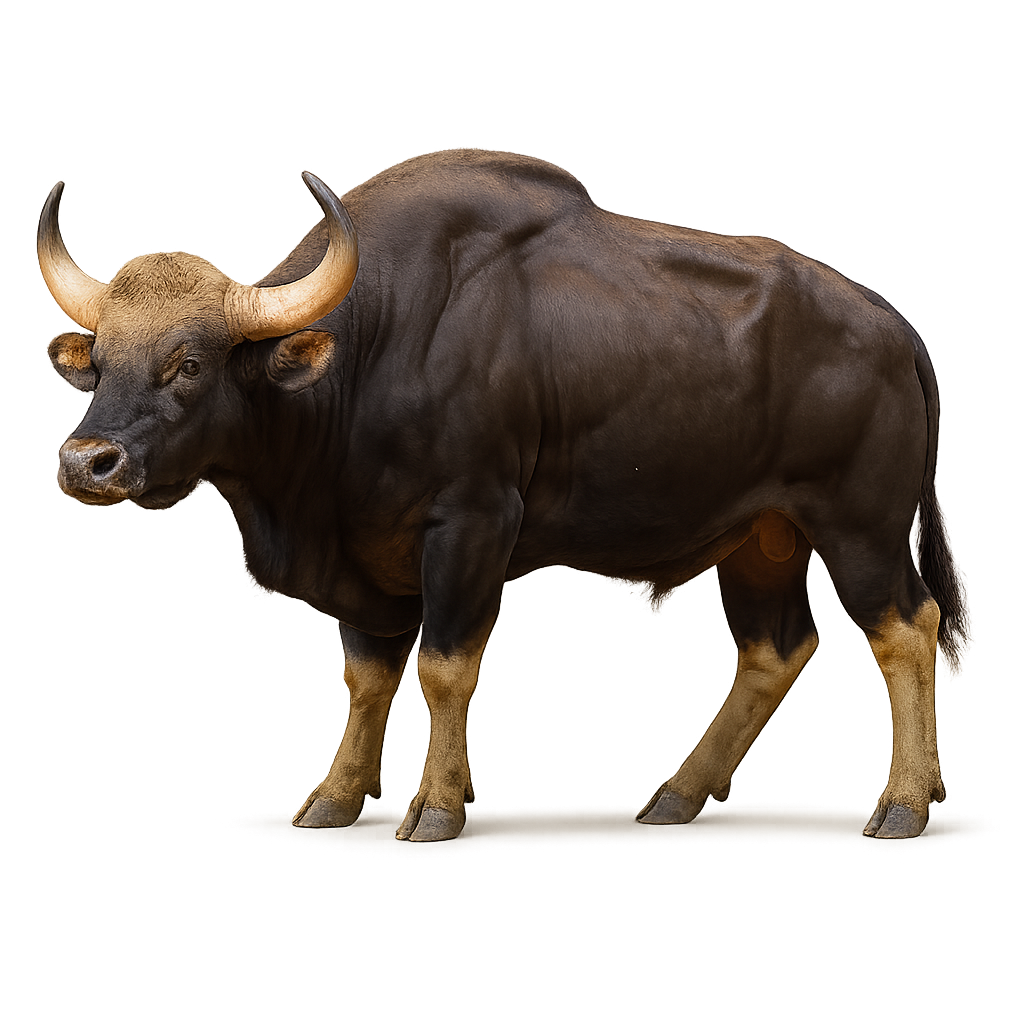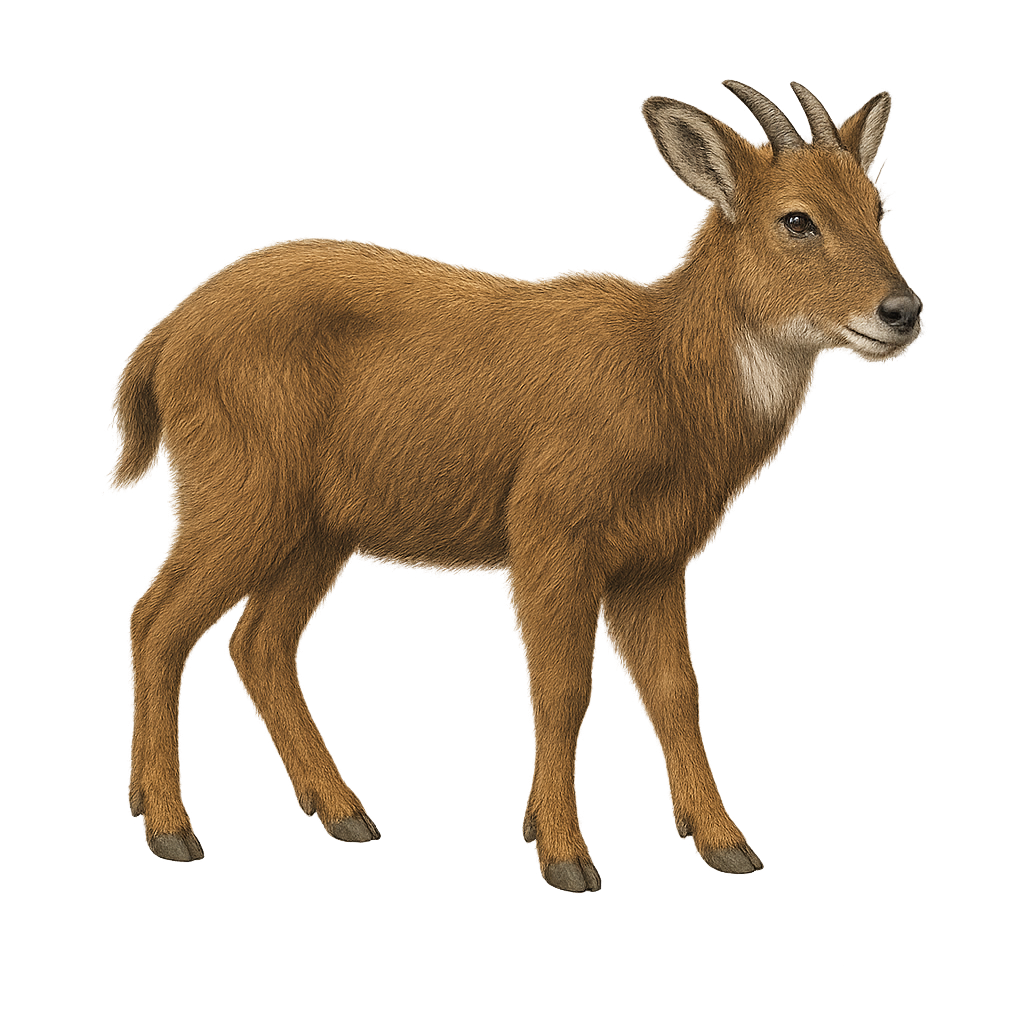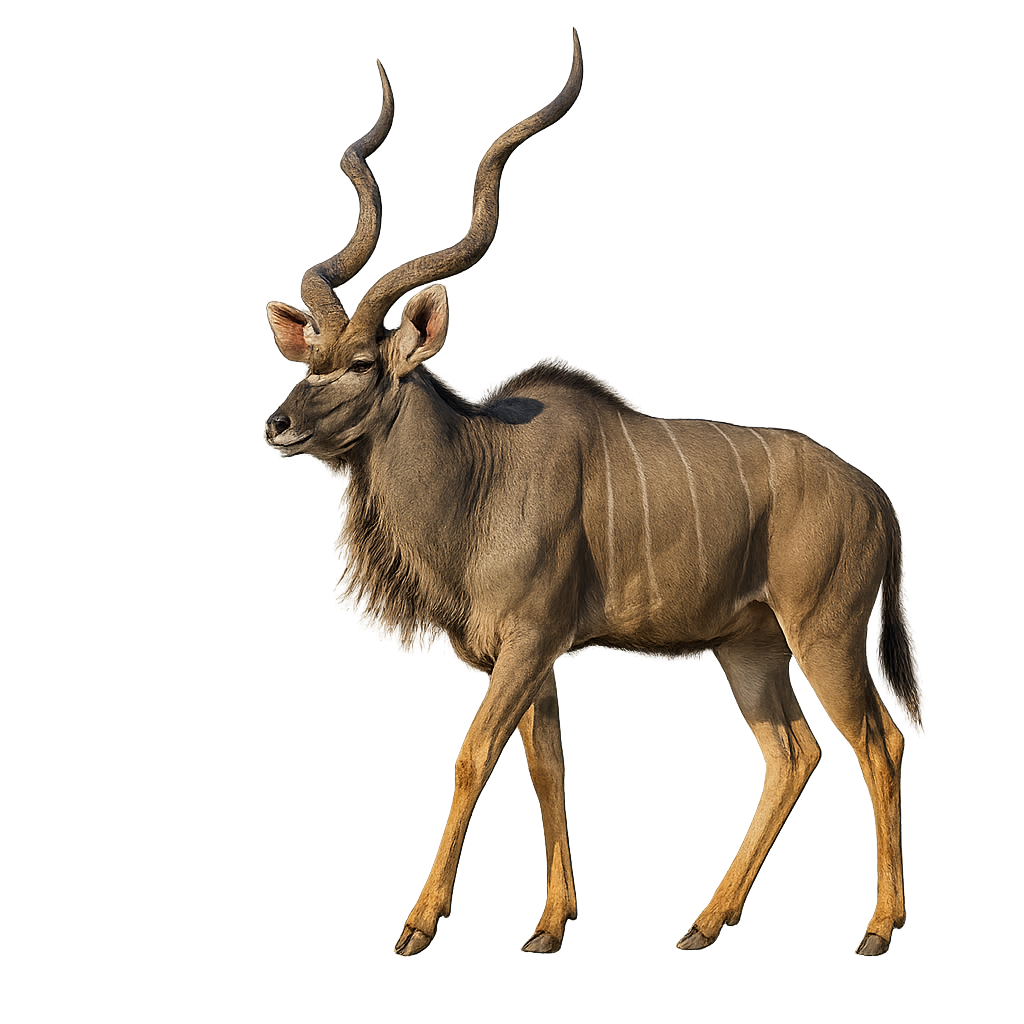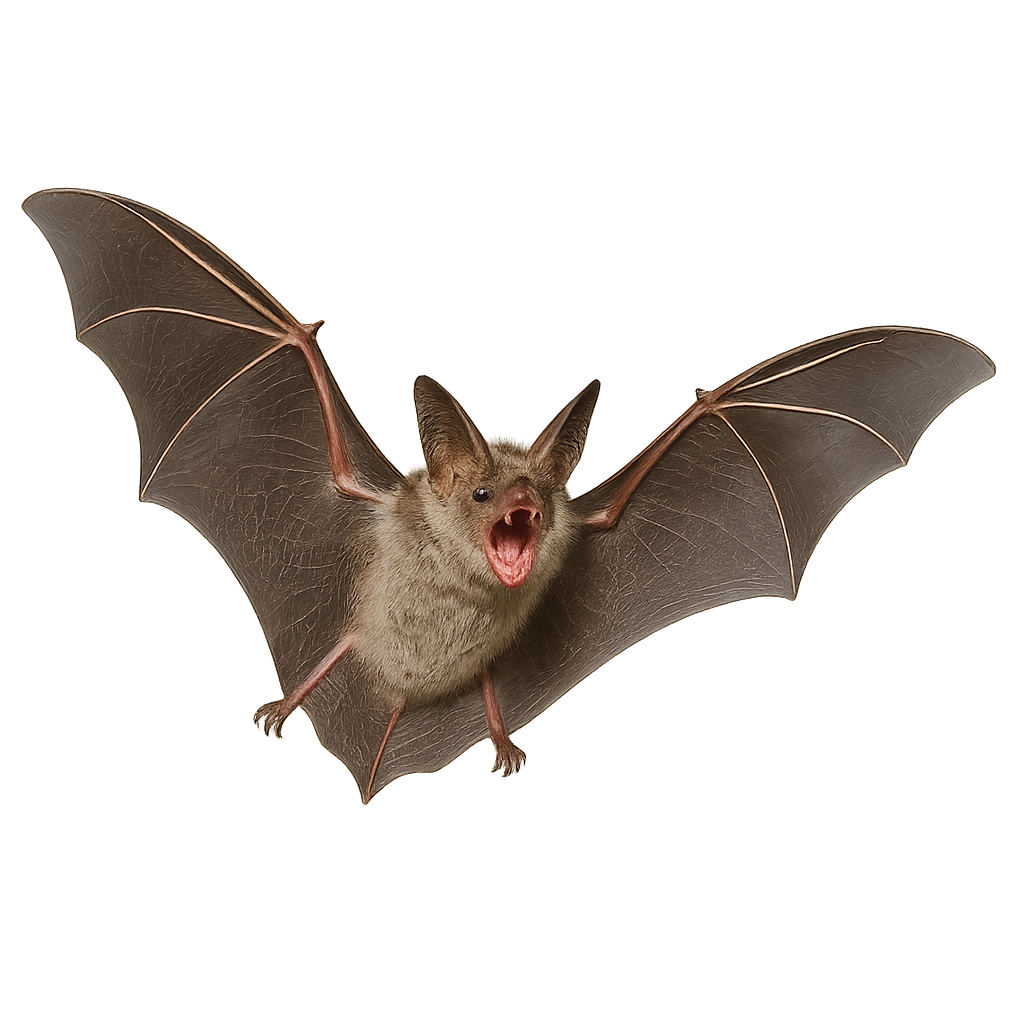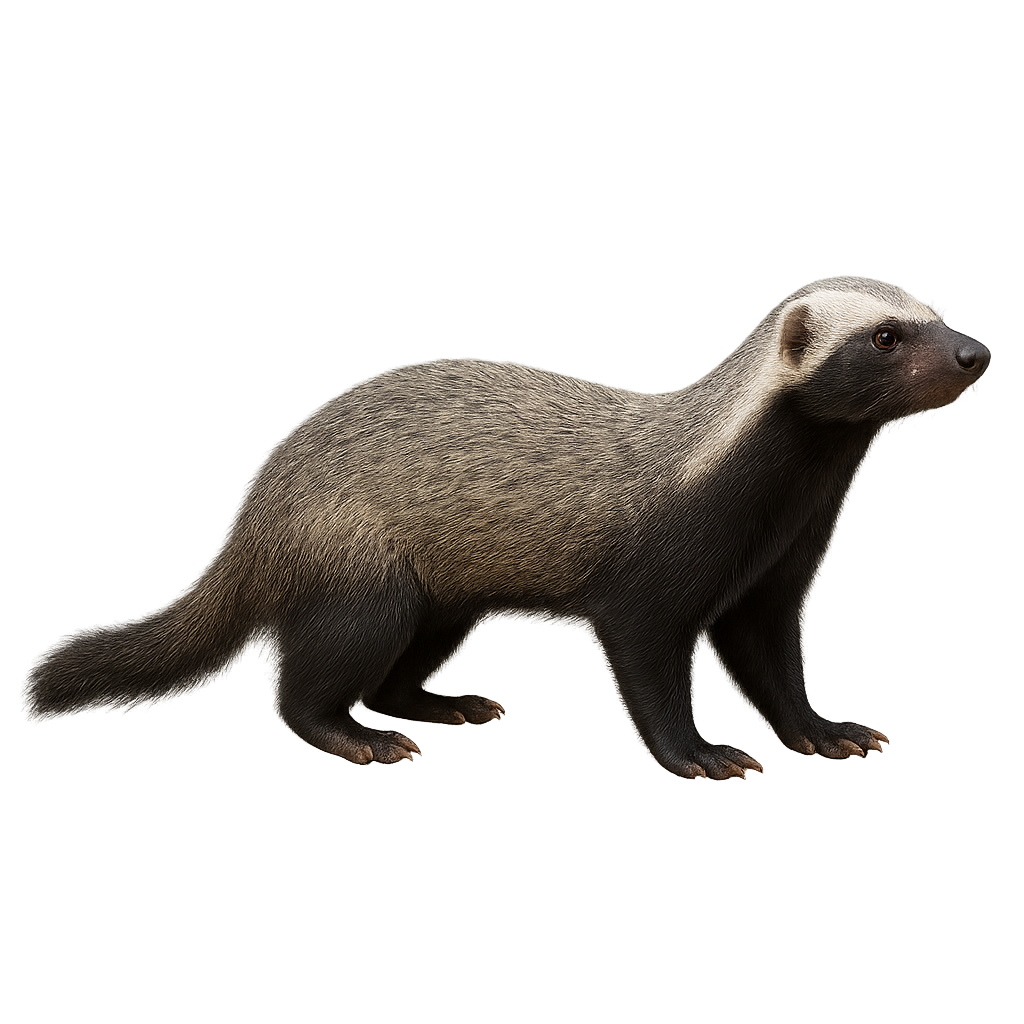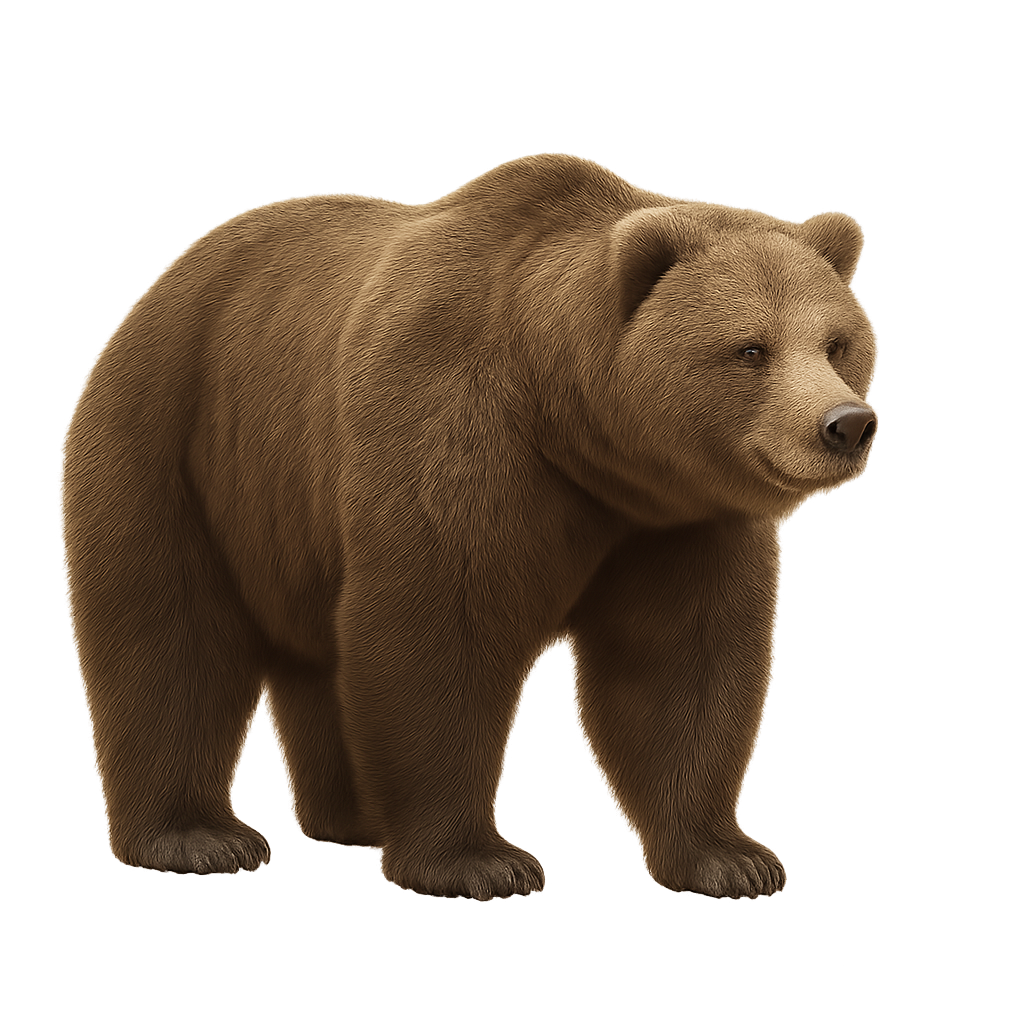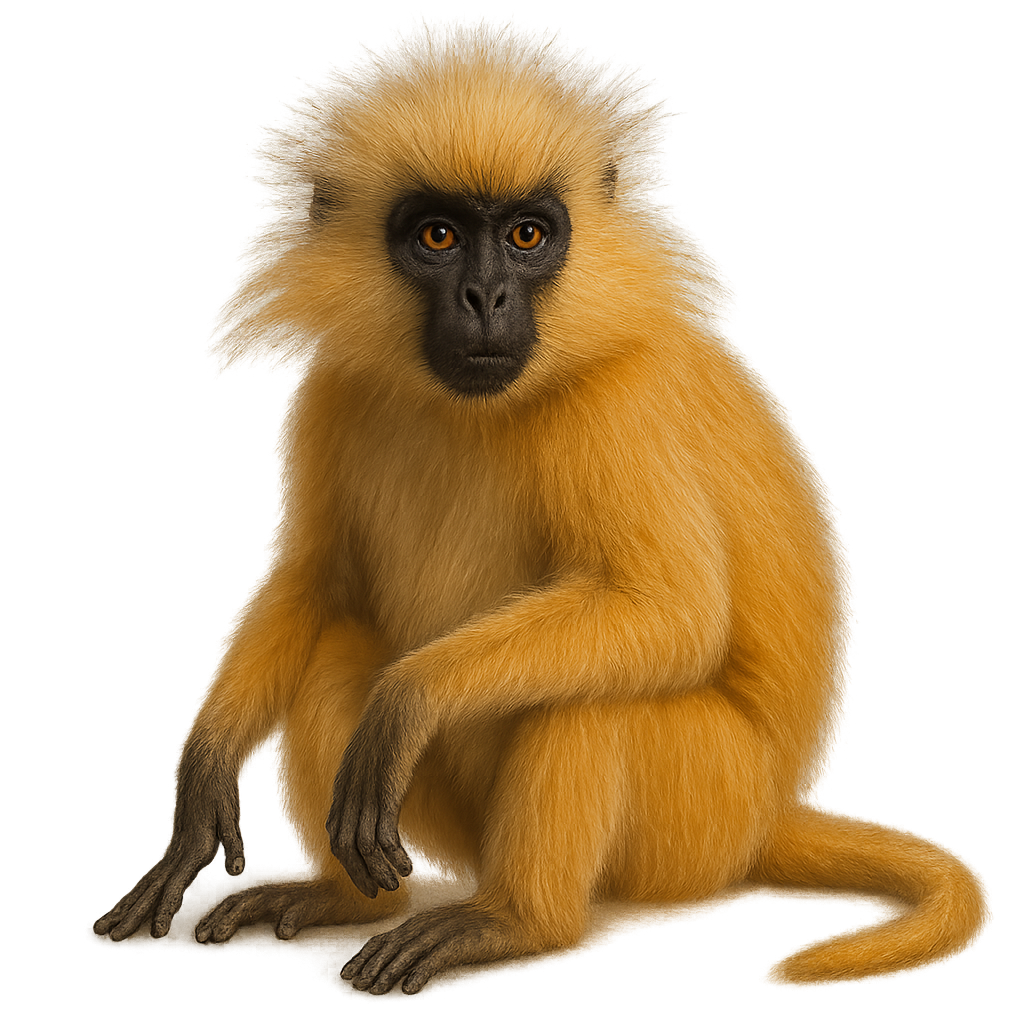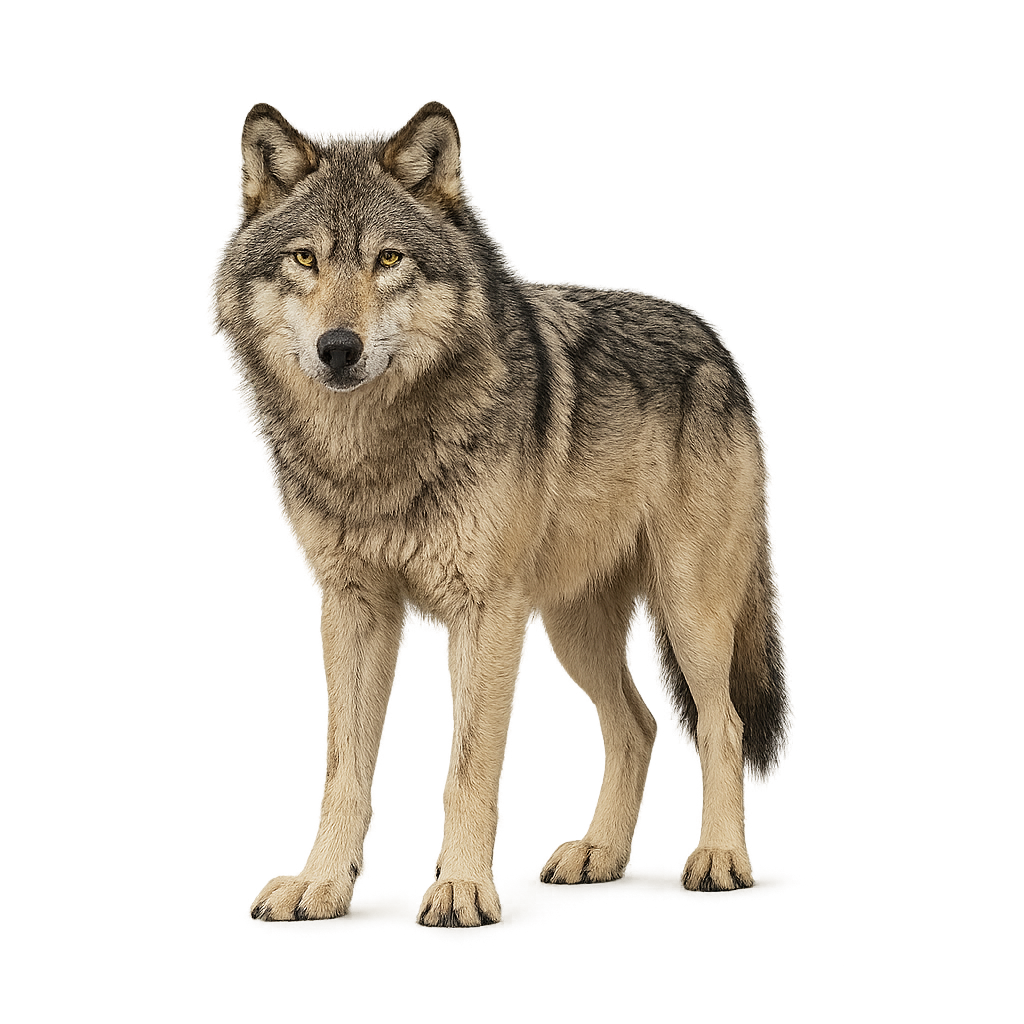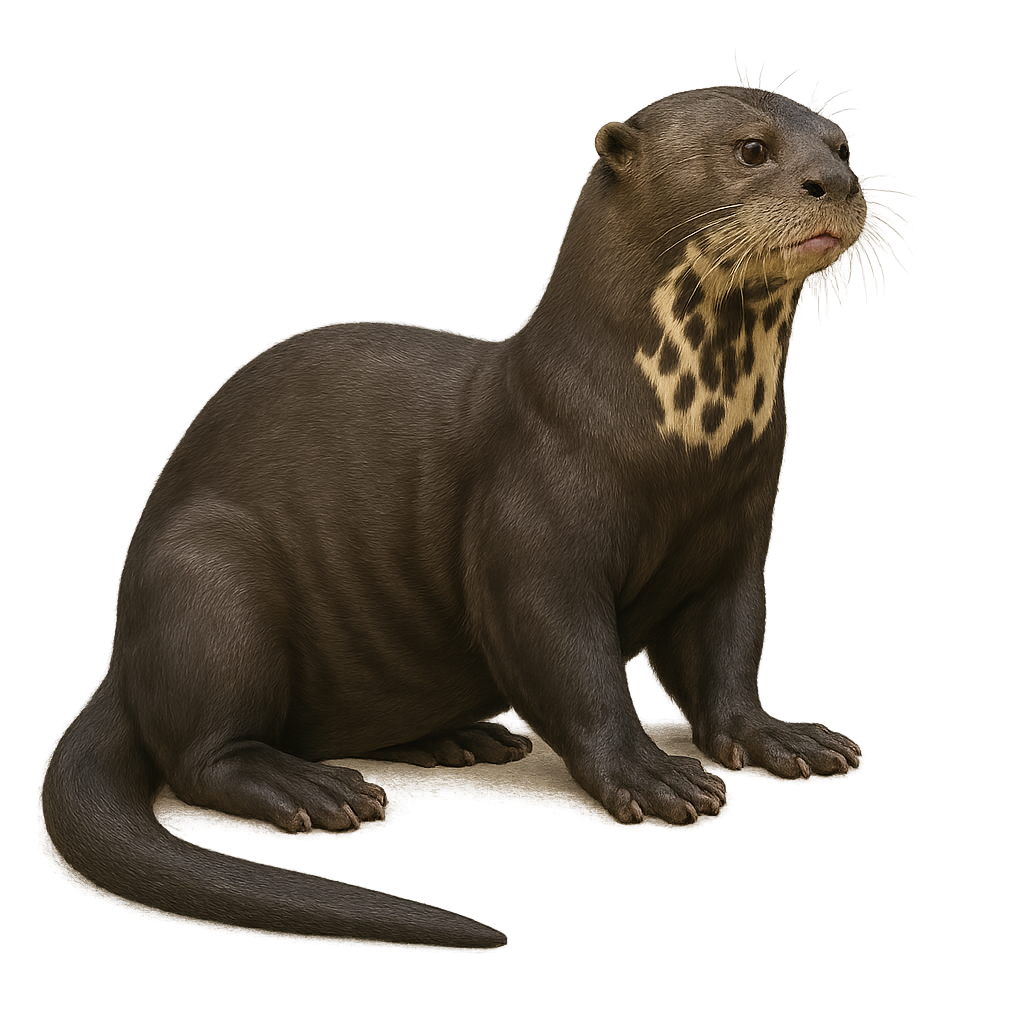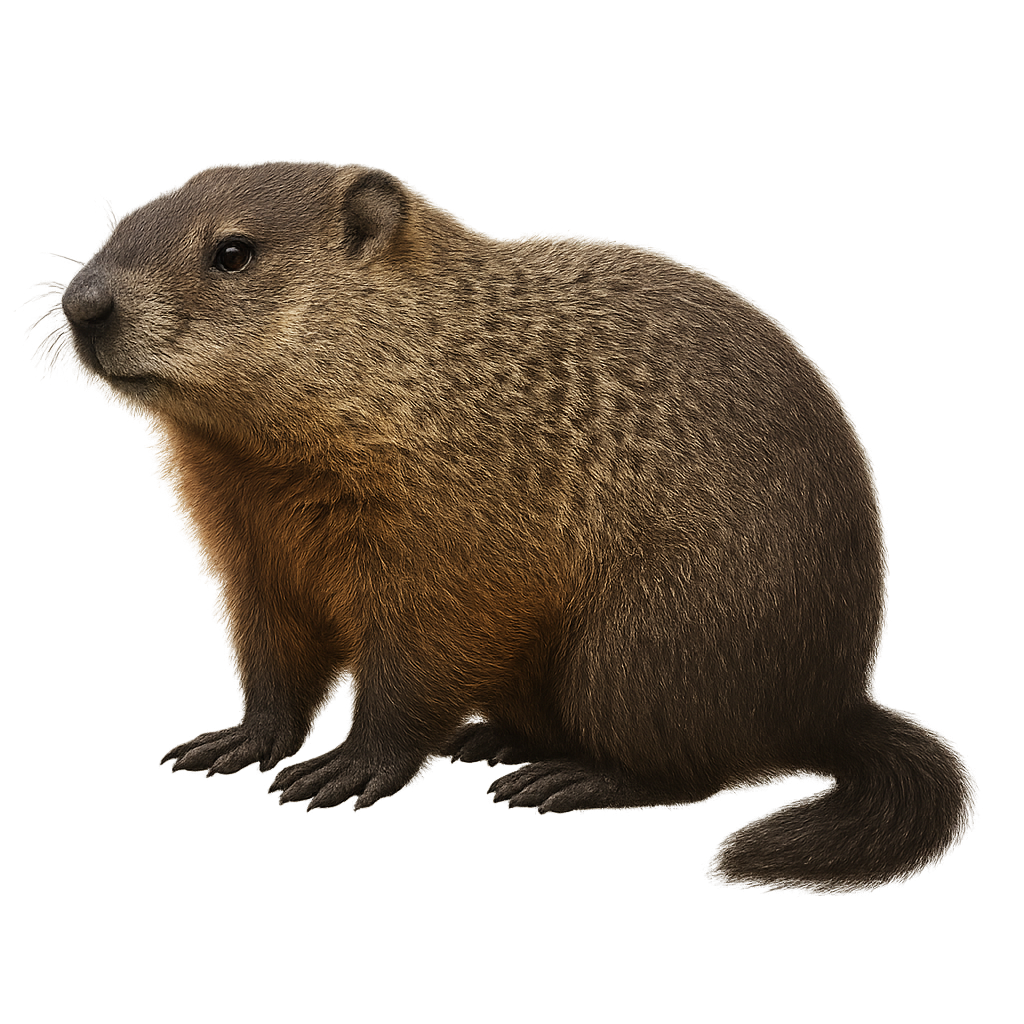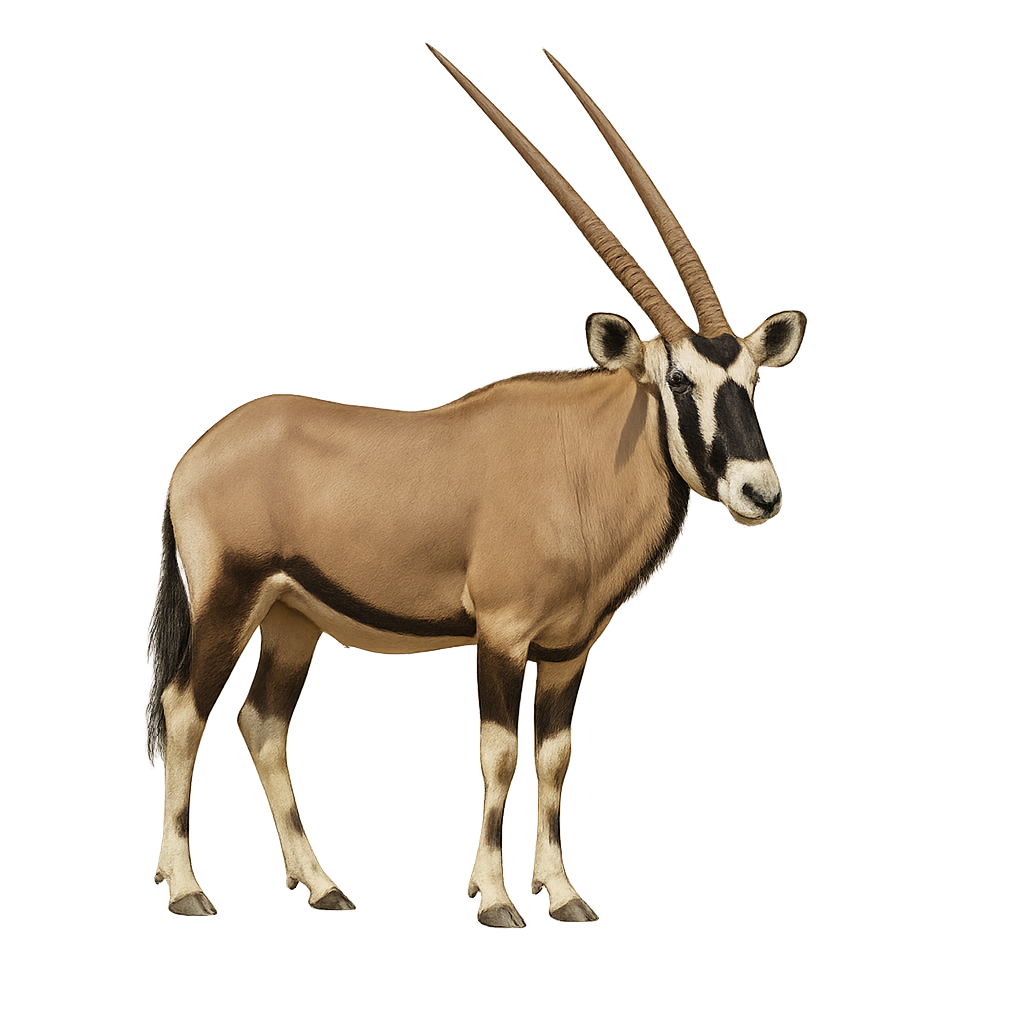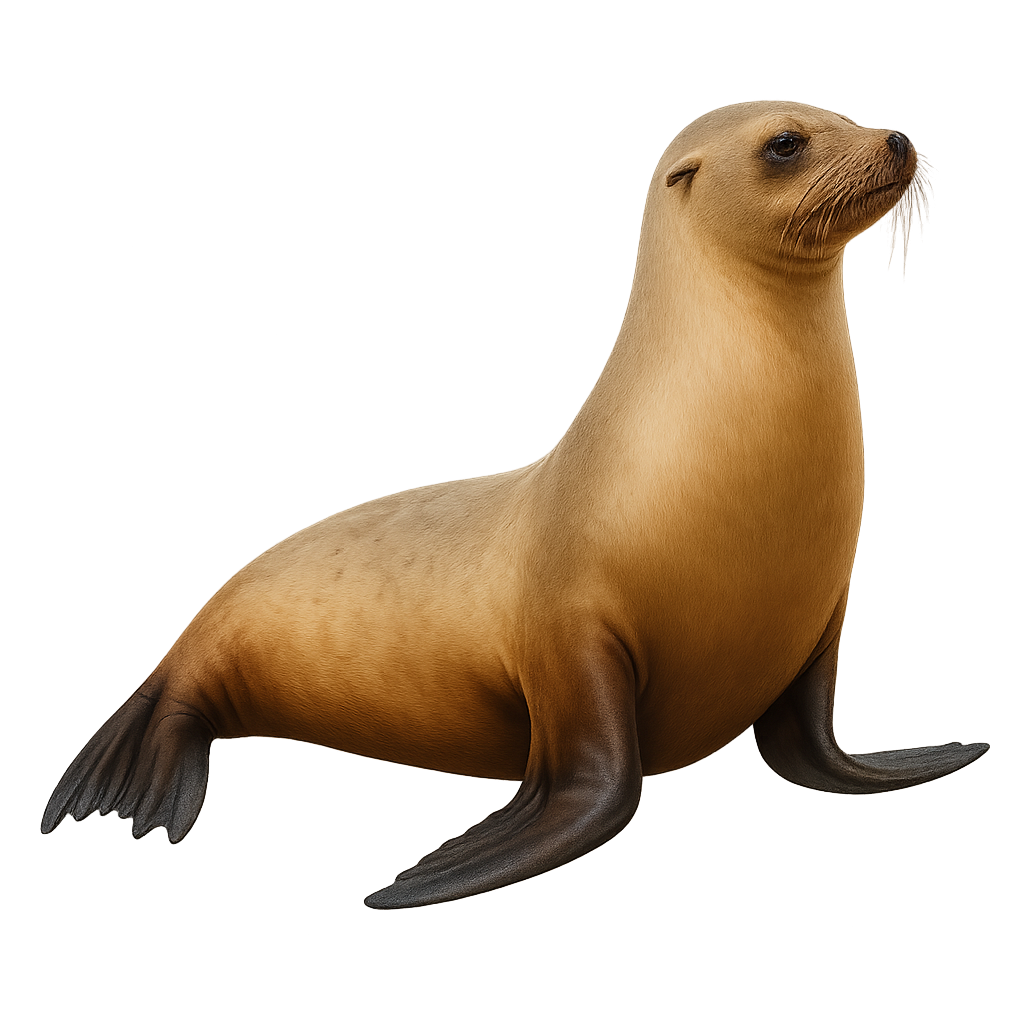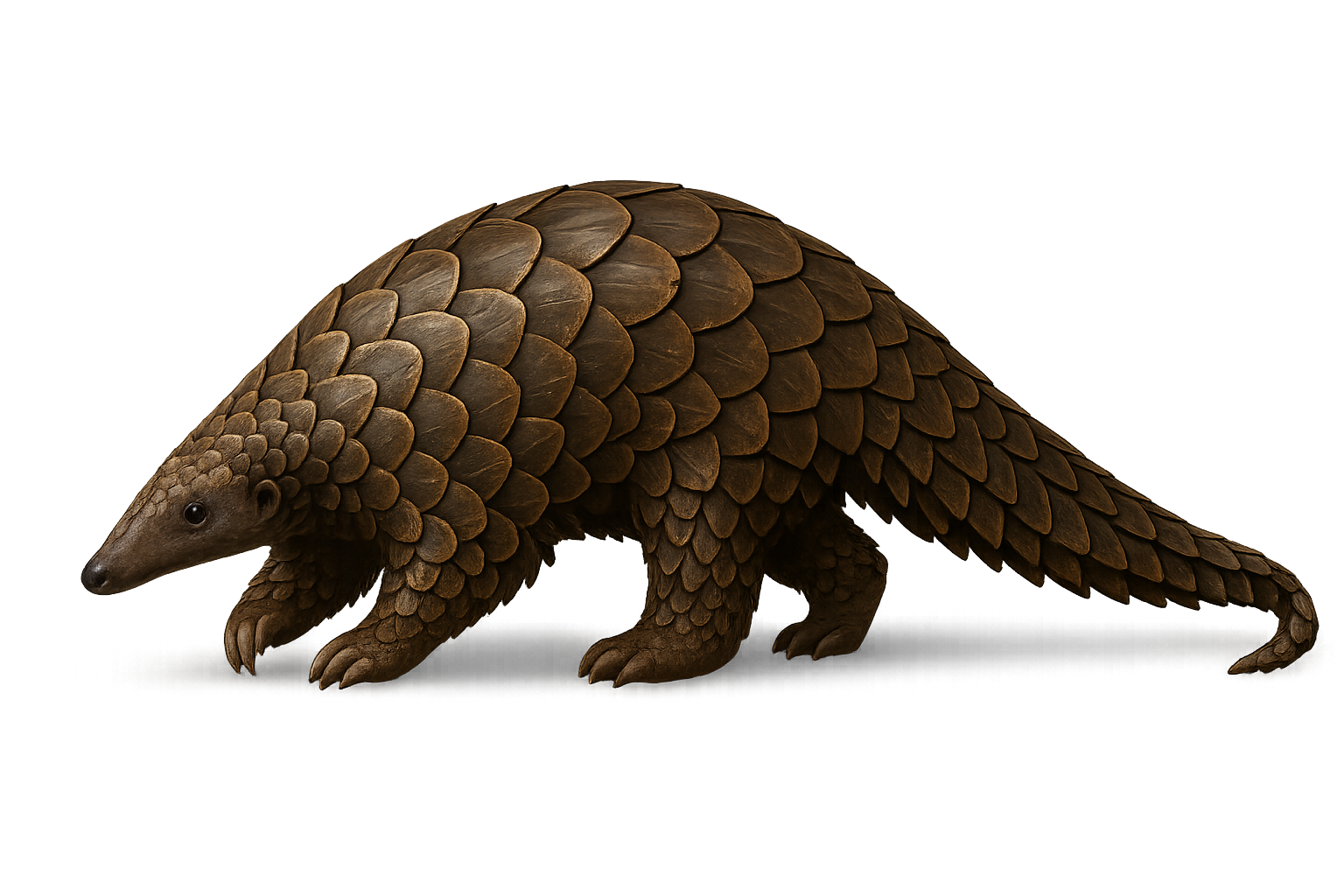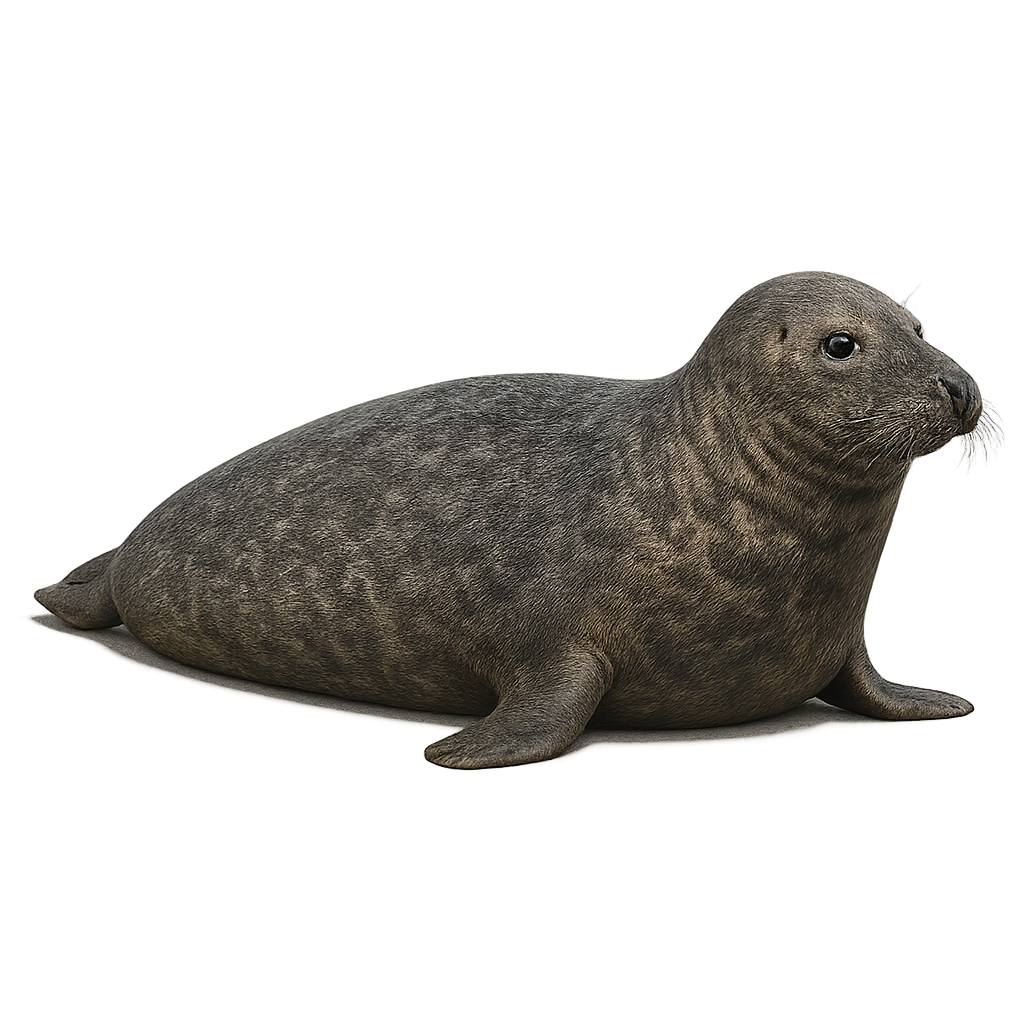The Guinea baboon, Papio papio, is a medium-sized primate belonging to the Cercopithecidae family. It is primarily found in West Africa, particularly in Guinea, Senegal, and Gambia. This baboon is distinguished by its reddish-brown fur and black face. Males are generally larger than females and have a more developed mane. They live in complex social groups, often consisting of several dozen individuals. These primates are omnivorous, feeding on fruits, seeds, insects, and small animals. The Guinea baboon plays an important role in its ecosystem, particularly in seed dispersal.
The Greenland whale is one of the largest baleen whales, with a size that can reach 16 to 18 meters. It lives in the icy waters of the Arctic and primarily feeds on krill and small fish, filtering them through its baleen plates. It is a long-lived animal, with a lifespan that can exceed 200 years. While protected, it is threatened by climate change, pollution, and ship collisions.
The Greater Spot-nosed Monkey, scientifically known as Cercopithecus nictitans, is a medium-sized arboreal primate found primarily in the tropical forests of West and Central Africa. It is distinguished by a characteristic white spot on its nose and a grey-green coat. This social monkey lives in hierarchical groups led by a dominant male. Omnivorous, it feeds on fruits, leaves, insects, and small animals. Its alarm call is used to warn the group of predators. Although its habitat is threatened by deforestation, it remains relatively widespread.
The Golden Jackal is a small canid found primarily in South Asia, the Middle East, and Southeastern Europe. It is easily recognizable by its golden fur, which ranges from pale yellow to golden brown, allowing it to blend into the landscapes of grasslands, open forests, and savannas. The Golden Jackal has a more slender body and relatively long legs compared to other jackals, enabling it to be an excellent runner.
Opportunistic by nature, the Golden Jackal feeds on a wide variety of prey, ranging from small mammals and birds to fruits and carrion. Although often solitary or in small family groups, the Golden Jackal can occasionally be seen in larger groups while foraging for food. It is also known for its varied vocalizations and skilled hunting behavior. While its population remains relatively stable, it faces threats such as habitat loss and human conflict.
The Golden Palm Civet, or Paradoxurus zeylonensis, is a nocturnal mammal endemic to Sri Lanka. Belonging to the Viverridae family, it is primarily found in tropical rainforests, tea plantations, and wooded areas. This species is recognizable by its golden fur and bushy tail. It is omnivorous, feeding on fruits, insects, and small vertebrates. Although elusive, it plays a crucial role in seed dispersal, contributing to the biodiversity of its habitat. Unfortunately, deforestation and habitat loss threaten its survival, classifying it as vulnerable according to the IUCN.
The Guereza Colobus is a large primate belonging to the family Cercopithecidae, easily recognized by its distinctive black and white fur. It has a white mane around its face, white limbs, and a long, bushy tail that helps it stabilize in the trees. Its black body is contrasted by tufts of white fur along the sides and back, making it one of the most elegant primates of the forest. It primarily lives in the tropical and subtropical forests of East Africa, spending most of its time in the trees.
The Guereza Colobus is primarily herbivorous, feeding on leaves, fruits, seeds, and flowers. With its specialized stomach, it can digest tough, fibrous leaves that other animals cannot consume. It lives in social groups led by a dominant male and is generally very calm, moving gracefully and agilely through the forest canopy. Although its population remains stable in some protected areas, it faces threats due to deforestation and hunting, causing some populations to be classified as vulnerable.
The Giant Eland, or Tragelaphus derbianus, is a large, robust, and majestic antelope, easily recognizable by its spiral-shaped horns, present only in males. It measures between 1.4 and 1.7 meters at the shoulder and can reach a length of 2.5 to 3 meters, including its tail. Its weight ranges between 600 and 1,000 kg, making it one of the largest antelopes. Its coat is generally light brown to gray, with white markings on the belly and throat. The Giant Eland primarily inhabits open savannas, light forests, and mountainous regions in Central and West Africa, mainly in the Democratic Republic of Congo, Cameroon, Gabon, and Angola. Herbivorous, the Giant Eland primarily feeds on grasses, leaves, and fruits, and it is capable of consuming a wide variety of vegetation, allowing it to adapt to different environments. It is a social animal that lives in family groups or small herds. While the species is classified as of least concern, it is threatened by habitat loss and hunting.
The Gaur is a large bovine, considered one of the most impressive species of wild cattle. It stands between 1.8 and 2 meters at the withers and can weigh from 500 to 1,000 kg, with males generally being larger and heavier than females. Its coat is dark, typically black or dark brown, with light markings on the legs and a distinctive mane around the neck. The Gaur primarily inhabits dense forests and mountains in South and Southeast Asia, especially in India, Nepal, Indonesia, and Malaysia. Herbivorous, it primarily feeds on grasses, young shoots, leaves, and fruits. The Gaur is a social animal, living in groups, although it is often observed alone or in small groups while foraging. Due to hunting, habitat loss, and conflicts with human populations, the Gaur is listed as vulnerable by the International Union for Conservation of Nature (IUCN).
The goitered gazelle, or Gazella subgutturosa, is a species of gazelle known for its enlarged neck, particularly in males. It primarily inhabits the steppes and deserts of Central Asia and the Middle East. This gazelle is well adapted to arid environments and can survive with minimal water, feeding on drought-resistant plants. It is known for its speed and agility, which help it evade natural predators. Males have lyre-shaped horns, while females have smaller horns or none at all. The goitered gazelle is a vulnerable species due to hunting and habitat loss.
The Grant's Gazelle is an elegant, medium-sized antelope, easily recognizable by its long legs and generally sandy-colored coat with distinctive markings. It stands about 75 cm at the withers and weighs between 40 and 60 kg. The coat of the Grant's Gazelle is primarily beige with darker vertical stripes along the flanks and a black stripe running across its back. Adult males have long, slightly curved horns in the shape of a lyre, while females generally lack them. This gazelle primarily inhabits savannas, grasslands, and wooded areas in East Africa, particularly in Kenya, Tanzania, and Uganda. Herbivorous, it primarily feeds on herbaceous plants, leaves, fruits, and bark. Very fast and agile, the Grant's Gazelle can reach speeds of up to 80 km/h, allowing it to escape many predators. Although the species is not endangered, it faces threats such as habitat loss, hunting, and competition with livestock for food resources.
The Gerenuk is a unique species of antelope from East Africa, recognizable by its long neck and graceful posture. It lives in savannas and semi-deserts, where it primarily feeds on shrubs and tree leaves. The Gerenuk is an excellent climber, capable of standing on its hind legs to reach high vegetation. This ability allows it to feed efficiently and avoid competition with other ground-dwelling herbivores. Although relatively discreet, the Gerenuk is threatened by habitat loss and poaching.

Gibbonss, members of the Hylobatidae family, are primates particularly known for their agility and their ability to move through the canopy. They are the smallest of the great apes, measuring between 40 and 70 cm in height, with long, powerful arms that can reach up to 2.5 times the length of their body. Their weight typically ranges from 5 to 15 kg, depending on the species. Gibbonss are primarily known for their mode of locomotion called "brachiation," where they move by swinging from branch to branch at impressive speeds, often at high altitudes. Their fur is typically dense, varying in color from black to light brown, and some species have distinct facial markings. Gibbonss primarily inhabit the tropical forests of Southeast Asia, where they feed mainly on fruits, leaves, and small insects. These primates are social and typically live in small family groups. While gibbons are not all at immediate risk, several species are endangered due to habitat loss, poaching, and the illegal wildlife trade.
The goral, Naemorhedus goral, is a robust and agile caprine, primarily inhabiting the mountainous regions of Asia, notably in India, Nepal, and China. It is characterized by its dense gray fur, short curved horns, and its ability to move easily on steep terrains. Gorals are social animals, forming small groups, although they can also be solitary. They mainly feed on leaves, grasses, and young shoots. Their preferred habitat includes mixed forests and alpine meadows, where they find refuge and food. Although their population is stable, they are threatened by hunting and the loss of their natural habitat.
The Macrotis lagotis, commonly known as the greater bilby, is a nocturnal marsupial native to Australia. Recognizable by its large rabbit-like ears, it has a blue-grey coat and a black and white tail. Adapted to arid environments, it digs deep burrows to protect itself from predators and extreme temperatures. An omnivore, it primarily feeds on insects, seeds, and fungi. Unfortunately, the greater bilby is endangered due to habitat loss and predation by introduced species such as foxes and cats. Conservation efforts are underway to protect this iconic species of the Australian ecosystem.
The Greater Kudu is an elegant, large antelope, easily recognized by its long, slender legs, streamlined body, and impressive spiral-shaped horns. It stands between 1.3 and 1.6 meters at the withers, with males weighing between 190 and 270 kg, and females weighing between 120 and 180 kg. Its coat is light gray to brown, with vertical white stripes on the body, which help it blend into forests and savannas. Males have long, spiral-shaped horns that can reach up to 1.5 meters in length, while females lack horns. The Greater Kudu primarily inhabits open forests, wooded areas, and savannas of sub-Saharan Africa, notably in East and Southern Africa. Herbivorous, it feeds mainly on leaves, bark, and fruits. This antelope is rather discreet and shy, typically living alone or in small family groups. While it is not currently in immediate danger, the Greater Kudu is threatened by habitat loss and hunting.
The greater mouse-eared bat is a medium-sized bat, 7–9 cm in body length, with a 35–43 cm wingspan and weighing 20–40 g. Uniform grey-brown fur, long rounded ears. A cave-dwelling species, forages on the ground and in low flight for beetles and other invertebrates.
The Giant Anteater, also known as the Myrmecophaga tridactyla, is a large insectivorous mammal primarily found in the tropical forests and savannas of South America, notably in Brazil, Guyana, Argentina, and Venezuela. It measures between 1.7 and 2.2 meters in length, with a tail of 60 to 90 cm, and weighs between 25 and 40 kg. Its fur is generally light gray or brown, and it has a long cylindrical snout, as well as an extremely long tongue that can reach up to 60 cm in length, which it uses to catch ants and termites. The Giant Anteater is a nocturnal animal, primarily feeding on ants, termites, and other insects found in nests. While it is an excellent digger and climber, it is threatened by habitat loss and illegal hunting.
The Greater Grison is a small carnivorous mammal from the Mustelidae family, found mainly in Central and South America. It has an elongated body, narrow head, and short legs. Its fur is characterized by a grayish color on the back and black on the belly, with a distinct white stripe running from the head to the base of the tail. This agile predator primarily feeds on small mammals, birds, and reptiles. It is often seen in tropical forests, savannas, and wetlands. Although mainly nocturnal, it can sometimes be active during the day.
The Grizzly Bear is a subspecies of the brown bear, imposing and robust, often considered one of the most powerful land predators in North America. It measures between 2 and 3 meters in length, with a shoulder height ranging from 1 to 1.5 meters, and weighs between 200 and 680 kg, with males generally being larger than females. Its fur is dense and can range from light to dark brown, sometimes with silver hues that give it a grizzled appearance. The Grizzly primarily inhabits forests, mountains, and prairie areas in North America, notably in Alaska, Canada, the Rocky Mountains, and U.S. national parks like Yellowstone. Omnivorous, it primarily feeds on berries, roots, fish, but also small mammals and sometimes animal carcasses. While feared due to its size and strength, the Grizzly is a shy animal and prefers to avoid human contact. The species is protected in many regions, although its population is still threatened by habitat loss, illegal hunting, and conflicts with humans.
The Trachypithecus geei, or Gee's golden langur, is a rare and fascinating primate endemic to the border region between Bhutan and India. It is distinguished by its striking golden fur, giving it a unique and majestic appearance. This arboreal monkey primarily inhabits tropical and subtropical forests, where it feeds on leaves, fruits, and flowers. Golden langurs are social animals, living in family groups led by a dominant male. Unfortunately, this species is threatened by deforestation and habitat fragmentation, leading to a decline in its population. Conservation efforts are underway to protect this iconic animal and its natural environment.
The Gray Wolf is a large carnivore, often considered the ancestor of all modern subspecies of wolves. It measures between 1.2 and 1.8 meters in length, with a tail of 30 to 50 cm, and weighs between 25 and 40 kg, though some individuals can reach 70 kg. Its coat is typically gray, but it can also include shades of white, brown, and black depending on the region and season. The Gray Wolf lives in a variety of habitats, from deep forests to tundra regions, and from mountains to plains. It is a social predator that lives in packs, cooperating with other members of its group to hunt prey such as deer, elk, bison, and other large mammals. The Gray Wolf plays an essential role in ecosystem balance by regulating herbivore populations. Although it is protected in many areas, it remains threatened by habitat loss, hunting, and conflicts with humans.
The giant otter (Pteronura brasiliensis) is a semi-aquatic mustelid measuring 1.5–1.8 m in length (including tail) and weighing 22–32 kg. It inhabits slow-moving rivers, marshes, and floodplain lakes in tropical South America from the Orinoco to the Amazon. Highly social, it lives in family groups of 4–20 individuals, digs riverbank dens, and uses loud vocalizations. A specialist carnivore, it hunts fish and crustaceans by diving, propelled by its powerful tail. Females give birth in the dry season (August–September), and group members reinforce bonds through mutual grooming.
The groundhog, also known as a woodchuck, is a medium-sized rodent belonging to the Sciuridae family. It is widely distributed across North America, particularly in grasslands, forests, and agricultural areas. With a stocky body and thick brown-gray fur, it measures about 40 to 65 cm in length, including the tail. Groundhogs are known for their hibernation behavior, spending the winter in deep burrows. They are primarily herbivorous, feeding on various plants, grasses, and occasionally insects. Although often solitary, they can be observed in small family groups. Their sharp alarm call is used to warn others of predators.
The Oryx gazelle is a large, sturdy antelope native to the arid regions of Southern Africa. It stands between 1.2 and 1.5 meters at the withers and weighs between 200 and 250 kg. Its coat is primarily gray or beige, with white markings on the belly, legs, and face, giving it a distinctive appearance. It has long, straight horns, which can reach up to 1 meter in length, and are characteristic of the species. The Oryx gazelle inhabits savannas, steppes, and deserts, where it feeds primarily on herbaceous plants, roots, and fruits. It is well adapted to extreme heat and drought conditions, thanks to its ability to reduce its body temperature and feed on sparse vegetation. While the Oryx gazelle is capable of surviving in desert environments, it is also able to travel long distances in search of food and water. The species is not currently endangered, but it faces threats related to habitat loss and hunting.
The Galápagos Sea Lion, Zalophus wollebaeki, is an iconic species of the Galápagos Islands. These sea lions are recognizable by their dark brown fur and relatively small size compared to other sea lion species. They primarily inhabit the beaches and rocky shores of the islands, where they rest and breed. Galápagos sea lions are highly social and often form large groups. They are also known for their curiosity towards humans, making them a popular attraction for tourists. However, they are vulnerable to human disturbances and environmental changes, leading to their classification as a near-threatened species by the IUCN.
The Giant Panda is a large mammal native to the mountains of China, primarily found in the regions of Sichuan, Shaanxi, and Gansu. It measures between 1.2 and 1.8 meters in length and weighs between 70 and 160 kg. What distinguishes it is its black and white coat, with black patches around its eyes, ears, and paws. The Giant Panda is a strict herbivore, feeding almost exclusively on bamboo, although it may occasionally eat fruits, roots, and small animals. It lives in bamboo forests, where it spends most of its day feeding due to the low nutritional value of its diet. The Giant Panda is a symbol of conservation due to its rarity, and although it is still considered vulnerable, conservation efforts have helped stabilize its population.
The Temminck's Pangolin is a small insectivorous mammal found primarily in Sub-Saharan Africa, notably in South Africa, Botswana, Namibia, and Zimbabwe. It measures about 50 to 60 cm in length, with a tail that makes up a significant portion of its size, and weighs between 3 and 7 kg. This pangolin is covered with large scales made of keratin, which protect it from predators. When threatened, it curls into a ball with its scales rolled outward. It primarily feeds on termites and other insects, which it captures with its long, sticky tongue. Although the Temminck's Pangolin is an excellent burrower, it is unfortunately threatened by poaching for its scales and by habitat loss.
The Giant Pangolin is the largest of the pangolin species, measuring between 1.2 and 1.5 meters in length, with a tail that can account for up to half of its total length. It weighs between 30 and 40 kg. This mammal, covered in large keratin scales, primarily lives in the forests of Central Africa, particularly in the Democratic Republic of the Congo and the Republic of the Congo. It is an excellent burrower and primarily feeds on termites and other insects, which it captures with its long tongue. The Giant Pangolin is a nocturnal and solitary species, using its powerful claws to dig burrows or open insect nests. Although its population is not well-known, the Giant Pangolin is threatened by deforestation, illegal hunting, and poaching for its scales, making it a vulnerable species.
The Gray Seal, also known as the Horsehead Seal, is a species of seal found in the coastal waters of the North Atlantic, particularly in Europe and North America. It measures between 2 and 3 meters in length and weighs between 170 and 300 kg. Its fur is typically silver-gray with black spots, and its head is characterized by a wide and elongated snout. The Gray Seal primarily feeds on fish, but also on crustaceans and cephalopods. It spends a lot of time on beaches and rocks for resting and breeding. Although it is not currently threatened, it can be affected by marine pollution, ship collisions, and human disturbance.
The Gambian pouched rat, scientifically known as Cricetomys gambianus, is a large rodent native to sub-Saharan Africa. It is easily identifiable by its long tail, large ears, and pointed snout. This nocturnal creature inhabits various environments such as forests, savannas, and agricultural areas. It is renowned for its ability to detect landmines due to its exceptional sense of smell. Although it can be considered a pest in some regions, it plays an important ecological role as a seed disperser and insect predator. Its longevity and adaptability make it an interesting subject for researchers.


